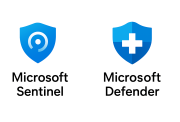
Pourquoi tester vos applications Web?
Les applications Web sont au centre de la plupart des processus d’affaires, car elles permettent de briser les barrières géographiques aux niveaux de service offerts aux clients et d’élargir ainsi le portefeuille de services et d’augmenter les revenus. Pour être opérationnelles, ces applications utilisent des infrastructures informatiques exposées à des risques de sécurité Web. En conséquence, elles sont soumises à de multiples attaques, y compris les attaques par Injection (SQL, Script, Commande OS, etc.), XSS, Force brute, Contournement des mécanismes d’authentification et Élevation de privilèges.
Before migrating web applications to production, it is highly recommended that you conduct penetration testing to ensure that they are not vulnerable to web threats. Penetration testing should be done regularly, as web applications are constantly attacked by criminals and new vulnerabilities are discovered every day.
What CAPTOSEC offers
We combine sophisticated tools with the best, expertise and experience of our professionals to assess and validate the security of your web applications. In addition, we use the recommendations provided by OWASP Top 10 as a basis. By doing so, we help our customers identify security vulnerabilities and fix them before any attacks occur.
Our services
- Identify and analyse vulnerabilities (manually and/or automatically)
- Eliminate false positives generated by automated tools
- Safety regression test with ZAP
- Test and validate each vulnerability
- Classify vulnerabilities according to their level of seriousness (low, medium, high)
- Explain and demonstrate to application and system owners how each vulnerability can be exploited by hackers
- Provide recommendations for mitigation
- Monitor and track changes in vulnerabilities and maintain historical data
- White box testing - our analysts have no information about your IT infrastructure. In other words, they act like a hacker
- Grey box test - our analysts have some information about your IT infrastructures
- White box testing - our analysts have a little more information about your IT infrastructures
- Recommendations for corrective measures
- Intrusion test report
- Evidence collected
- Detecting and correcting zero-day attacks
- Improving information security within the organisation
- Compliance with standards, laws and regulations (e.g. PCI-DSS)







